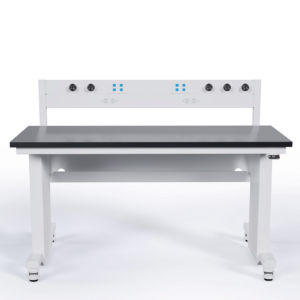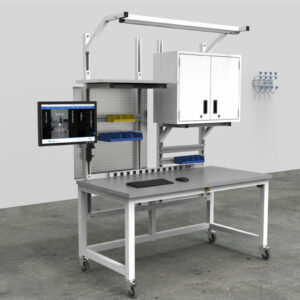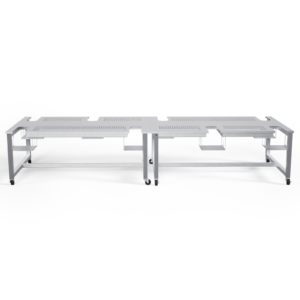Why are IT Systems for K-12 Education so Complicated?
Even the most modest-sized K-12 school districts face complex IT requirements that rival those of many large commercial businesses. How can K-12 education navigate the ever-changing IT infrastructure landscape and come out on top? We take a look.
New Expectations for K-12 IT Infrastructure Mean Even Greater IT Requirements
A generation or two ago, the IT requirements for K-12 Education systems mostly revolved around managing employee HR benefits and payrolls, facilities maintenance and capital improvement budgets, library and textbook inventories, athletics programs, bus transportation, as well as student health and attendance records, test results and grades.
It was a much simpler time.
But the same switch to project-based learning that turned classroom facility design on its head has caused the IT requirements for K-12 education to grow exponentially as well.
Within a few years, K-12 IT teams have found themselves facing service challenges that rivaled, or even exceeded, those of similarly sized private commercial businesses.
Consider for a moment a moderately-sized school district — one with five high schools, each with 1,800 students. That quickly adds up to 9,000 (!) student users, each of whom will want to:
- Download and upload their homework assignments from home.
- Work on their projects in the Computer Lab, often using hardware-intensive software apps.
- Use Computer-Based Training (CBT) apps, often with video and game elements.
- Bring one or more computing devices to school (BYOD), from smartphones to notebook computers, and access the network.
- Pose questions to their teachers after hours via their smartphones.
- Access library reference materials and check out ebooks.
- Chat with other classmates working together on group projects.
- Get timely emergency alerts or weather-related notices via texts.
And that’s just the base scenario for now.

The IT requirements for K-12 institutions are expected to grow even faster, thanks to a range of developments, including:
- Deployment of Virtual and Augmented Reality (VR/AR) education systems that use advanced hardware and video simulations, such a Google Expeditions.
- Groupware apps, such as Top Hat, that allow instructors to create, share, and deploy sophisticated training materials with built-in assessment tests.
- AI-based tools that perform formative and summative student evaluations and provide just-in-time recommendations/changes to computer-based training systems for each individual student.
- Widespread adoptions of voice-activated automation systems, which are just starting to ripple through existing computer solutions (think Alexa, Siri, Google Translate, etc.).
- Enhanced security monitoring systems designed to prevent active shooters from gaining access, as well as assist first responders in the event of emergencies.
IT Buzzword Bingo for K-12 Education
The world of IT is full of jargon. Use this Quick Reference Guide to dispel the mystery behind some of the newest IT terms being thrown about.
| Cloud Computing | A remote Data Center (or Centers if data is replicated in multiple locations) that provides on-demand access to computer resources, including data storage. Public clouds generally allow users to pay for access according to the amount of computer resources used (Power by the Hour). Users of Public Clouds do not have to provision or maintain these systems, but they need to trust cloud providers to maintain the security and privacy of their data. See also IaaS. |
| Cloudlets, Fog, Thick Clients | Terms to describe the addition of cloud services closer to the user to reduce the effect of time lags (latency), especially when using games or voice-controlled apps that work best in real-time. See also Edge Computing. |
| Data Center | A physical space dedicated to housing the computer systems (including servers, data networking, and storage systems) used by an organization. Virtual Data Centers may refer to HCI or Cloud-based solutions. |
| DX | DX, or “Digital Transformation,” is the lofty marketing term to describe the process of moving existing processes online as well as creating new ones that could only exist online. |
| Edge Computing | Due to data bandwidth limitations, Cloud Computing is not optimal for data transfer intensive applications that require real-time responses, such as games or voice-activated applications. Edge Computing is a term that describes placing servers and other computing elements closer to the user (which makes it a new name for the traditional way of doing things). |
| Forklift Upgrade | How the IT Consultant or Vendor privately describes replacing your existing (Legacy) IT system equipment with all-new software systems and hardware. See also Legacy System. |
| HCI (Hyper-Converged Infrastructure) | HCI is a new data center architecture that creates a virtual version of traditional Three Tier Systems Architecture. Often runs on a single, dedicated hardware device (appliance), which can dramatically reduce the number of complex hardware systems needed in a data center. |
| Hypervisor | Also known as a Virtual Machine Monitor (VMM). Hypervisors allow a single computer server to emulate the operation of more than one “virtual” servers on the same machine, which dramatically reduces the cost and complexity of operating servers in Data Centers. See also HCI. |
| IaaS (Infrastructure as a Service) | Instead of relying on a local IT system, users of IaaS systems access their computing infrastructure via the internet, on a system that is managed by an external vendor at a remote location. See also Cloud Computing, which is a classic IaaS example. |
| IoT (Internet of Things) | Internet-connected devices, including security cameras, wireless access points, smart printers, and even internet-connected refrigerators, are considered part of the Internet of Things. Unless carefully managed, IoT devices can be potential points of entry for network hackers. |
| Legacy System | How the IT Consultant or Vendor describes your existing IT system, including software and equipment, to differentiate it from a new proposed replacement or system upgrade. See also Forklift Upgrade. |
| Modular Data Center | Refers to a standalone HCI-based Data Center with built-in security and electric power backup systems configured by the factory as a “Data Center In a Box” that can be drop loaded on-site and installed quickly. |
| SaaS (Software as a Service) | Refers to a variety of solutions (such as online accounting systems, DropBox, or Google Apps) that users access via the Internet (but the primary data is held on the remote server). See also IaaS. |
| SAN (Storage Area Network) | A Storage Area Network (SAN) allows servers to access disk arrays and other storage devices as if they were locally-attached devices. |
| Three Tier Systems Architecture | Traditional data center architecture that separates data computing, data storage, and data networking into three separate system buckets. |
| Virtual Machines | See Hypervisor. |
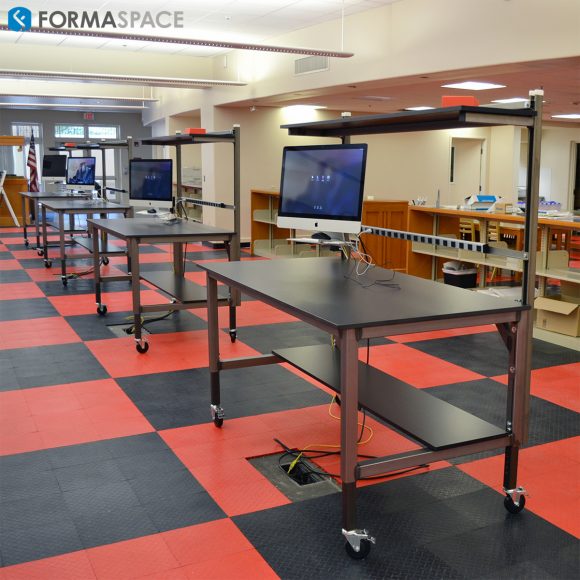
Need for Rock Solid Infrastructure or “How Things Can Go Wrong Fast”
As Murphy’s Law says, anything that can go wrong will go wrong. It’s just a matter of time.
Unfortunately for K-12 IT Administrators, the consequences of unexpected IT downtime can be a very public and humbling experience.
Not only do you have the traditional stakeholders, such a school administration staff and teachers (even the district supervisors, if things go especially awry), you also have all the students — and their parents — to answer to if access to services they’ve come to expect is suddenly unavailable.
In fact, the bottom line is it doesn’t matter if your ISP has a network outage cutting you off from the internet, if the power grid goes out in a lightning strike and the emergency backup generator doesn’t work, the roof or a pipe leaks and fries the power supply on the server rack, the landscape maintenance team drags a backhoe over your fiber connections buried underground, or the A/C system in your Data Center fails, causing all the plastic connectors to melt — the result is the same: hundreds if not thousands of users who complain they can’t do anything.
In plain English: downtime is a disaster in the making.
And the consequences of a down system day might make for a comparatively good experience compared to some of the unattractive alternatives, such as lost or compromised data due to hardware failures or virus infections (or worse, active data breaches by hackers), accidental exposure of private information, and so on.
State-of-the-Art Infrastructure for K-12 Education: 2019 Edition
What can K-12 IT administrators do to simplify their lives and make their data centers more resilient?
Many of today’s systems architects are questioning whether the Three Tier Systems Architecture traditionally used in data centers still is up to the task.
There’s nothing fundamentally wrong with the idea of separating the network topology into three buckets, e.g. data computing, data storage, and data networking. The problem comes with scaling up to handle ever-increasing requirements from the users.
All those new on-demand educational software systems (see outlined above) translate into the need to provision, operate, and maintain an ever greater number of servers, SAN storage systems, and data network gear to handle it all.
Yet many school systems are burdened with “data center” setups that are, shall we say, highly improvised — reports of K-12 IT systems housed in unused storage closets, or even converted restrooms, are not unheard of. The operational shortcomings stemming from these kinds of “unplanned” infrastructure setups are only made worse by the need to cram more gear into these improvised “data center” spaces to keep up with growing IT demands.
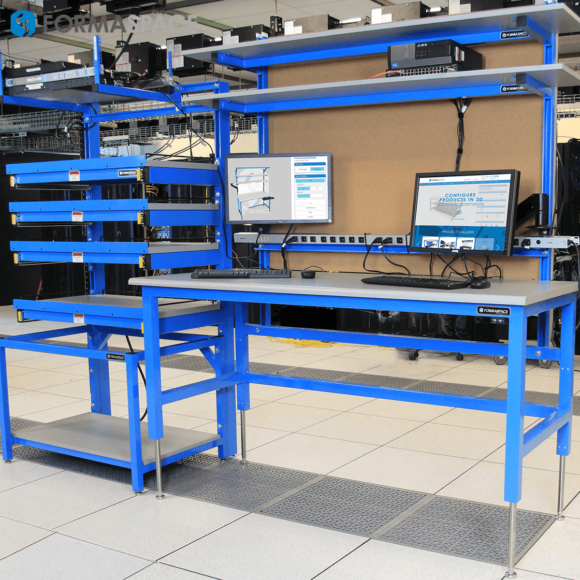
1. Cloud-Based Virtual Data Centers
Fortunately, there are new technology infrastructure alternatives available to K-12 educational institutions.
The first option is to outsource your infrastructure and let it live on the Cloud, using an Infrastructure as a Service (IaaS) provider.
The advantage of this approach is that the major public Cloud providers (including market leaders Amazon, Google, Rackspace, and others) make it very easy to “spin up” a new virtual server on demand. You no longer have to provision, maintain, or upgrade Data Center servers or storage, and many plans allow you to pay on a usage basis (a.k.a. Power by the Hour).
The disadvantage of this approach is that it doesn’t entirely eliminate the need for an onsite IT tech lab, even if it’s just for development, testing, and deployment of cloud-based apps.
But not every application is suitable for deployment on the cloud, for several reasons. Yours might be tied to a legacy system that would be expensive and time-consuming to replace with an online system if an equivalent one is even available. Control over data is also a critical consideration: many school district administrators are uncomfortable with the idea of having data being exposed to the wider internet, much less being hosted offsite by a third-party Cloud Computing provider.*
*The emerging market for Cloud Access Security Brokers (CASBs) is intended to make the connection to and from Cloud services more secure, but it adds another level of complexity.
Finally, many of the newest applications used in education are not only big bandwidth hogs (such as video streaming services, games, and voice-activated apps), they also require low latency (e.g. instant response) — which does not play to the strengths of Cloud computing architecture.*
*In response, Cloud service providers have begun touting Hybrid Clouds or so-called Edge Computing architectures, which bring servers closer to the user to reduce latency times. (In other words, what is old is new again!)
Verdict: Cloud Computing can be the right solution for specific use cases, such as creating on-demand development environments, or for on-demand storage and application deployments where data privacy concerns and latency issues are not critical.
2. Enhanced On-Site Virtual Server Data Centers: HCI (Hyper-Converged Infrastructure)
Not so long ago, Data Center network topologies were easy to understand. Under the Three Tier Systems Model, you had your server, your storage system (typically a SAN), and your networking gear.
As we alluded to earlier, scaling up used to mean buying more of each, which took up more physical space, required more cabling, more air-conditioning, and most of all, more patience.
The first breakthrough came in server design. Borrowing an old concept from mainframe computing, server manufacturers implemented the Hypervisor concept (also known as a Virtual Machine) on PC-based servers. This approach allows a single computer server on a rack (often referred to as a ‘blade’) to emulate the operation of more than one “virtual” servers — on that one single machine.
Let’s say you run a total of 5 virtual servers on one physical server, which is a conservative number. That saves the cost of procuring and operating 4 additional physical servers, which is a massive saving.
Now let’s go one step further. What if you could emulate the storage systems and data networking gear as well?
There’s a name for this: Hyper-Converged Infrastructure (HCI). It’s the Data Center equivalent of putting a computer on a chip. HCI-based systems use software and hardware to emulate the traditional Three Tier Systems Architecture, allowing everything to run on a single, dedicated hardware device (appliance).
Verdict: An increasing number of K-12 IT administrators are looking into HCI-based systems, as they dramatically reduce the physical space needed for servers, storage, and network gear in Data Centers.
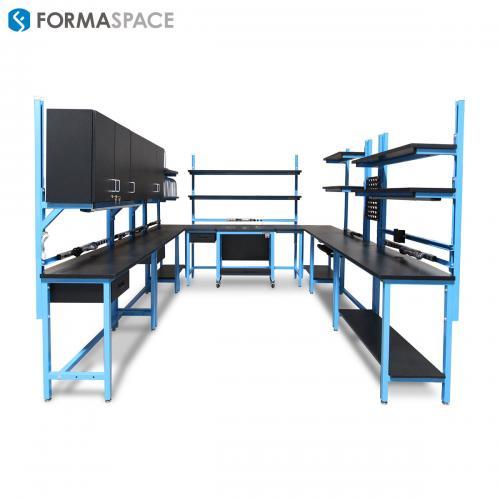
3. Modular On-Site Data Centers
Thanks to their high level of hardware integration and compact size, HCI-based solutions can help relieve the pressures on K-12 Data Center administrators, who have been challenged by the need to find room to accommodate the increased demand for servers, storage, and the necessary cabling to connect everything together.
But HCI is not a complete panacea — there are still plenty of things that can go wrong.
Power outages are one example. Data Centers located on-site still need a backup power source, typically a heavy-duty battery for short duration outages (and smoothing out power surges) and a generator backup for longer outages.
Recognizing a marketing opportunity, vendors, such as APC/Schneider Electric, have created “modular” solutions that are what might be termed a “Data Center in a Box.” These modular data centers feature HCI-based server + storage gear, combined with the necessary HVAC environmental controls, plus an uninterruptible power supply system.
The result is a new infrastructure category: the Modular Data Center, which can be dropped shipped onto a concrete pad, even in a parking lot if necessary.
Verdict: While it may sound more like a temporary emergency solution, some school districts are making these modular systems the permanent core of their Data Center Solutions, even going so far as to build concrete block walls around the units for added protection.
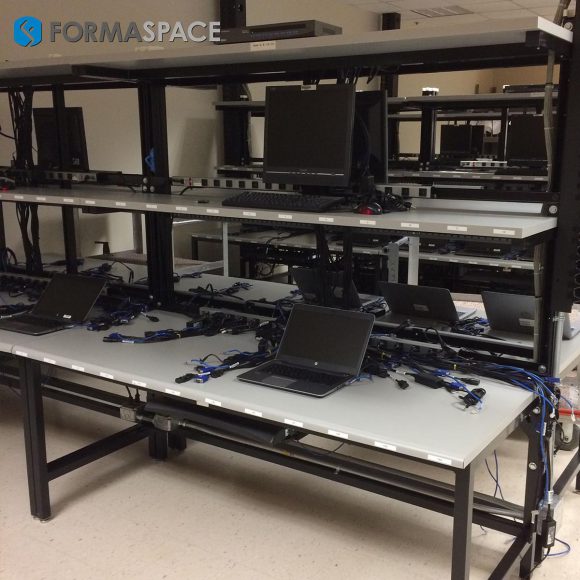
Wildcard for the Future: 5G
Finally, an article on Data Center infrastructure wouldn’t be complete without touching on the emerging new 5G telecommunications standards now being rolled out nationwide.
A common question that gets posed to IT teams by school administrators goes along the lines of “Why not postpone upgrading our infrastructure, shouldn’t we be waiting for 5G?”
It’s a reasonable question that requires a careful response.
Broadly speaking, it’s probably a good idea to think of 5G as a super-fast way to connect to the internet — like a souped-up Wi-Fi connection that works over cellular communication networks.
These quick up and down connections should reduce latency, to provide a quicker response for real-time apps, such as those using voice-activated interfaces. Another advantage for schools switching over to 5G devices is they might not need to hardwire as many of their device to the network (everything can be wireless by default), reducing the need to install and maintain extensive LAN connections and Wi-Fi access points.
Faster speeds could also make it easier to access cloud-based services, such as Chromebooks, which are dependent on a quick internet connection. These faster connections could also tip a decision in favor of investing in Cloud-based Data Center infrastructure.
But there are a lot of ifs, starting with the cost. While the cost of 5G services are likely to be competitive during the roll-out period, what would school districts need to pay to Verizon, AT&T, etc. in the years to come to connect every student’s phone and computer to the 5G network? Would it be a flat rate or one based on the amount of data? Or will schools be able to create their own 5G networks to connect to the internet and their own Data Centers directly?
Verdict: Overall, it’s too soon to tell, given the many outstanding implementation and cost questions. It’s also important to distinguish the role of 5G as a data delivery mechanism that’s separate from the design and operational requirements of a K-12 Data Center — although 5G may make Cloud-based solutions a bit more attractive if its bandwidth promises stand up to real-world conditions.
Formaspace is Your Education Partner
With more than 300 education customers (including most of the Ivy League institutions) Formaspace is your partner for education furniture systems.
Turn to Formaspace for IT/Tech labs and Data Centers, wet and dry laboratory facilities, furniture for classrooms and social spaces (including lounges and cafeterias), outdoor spaces and maker spaces.
We build all our furniture solutions here in the USA at our Austin, Texas factory headquarters.
Find out how we can help make your next project a major success.
Contact your Formaspace Design Consultant today.






